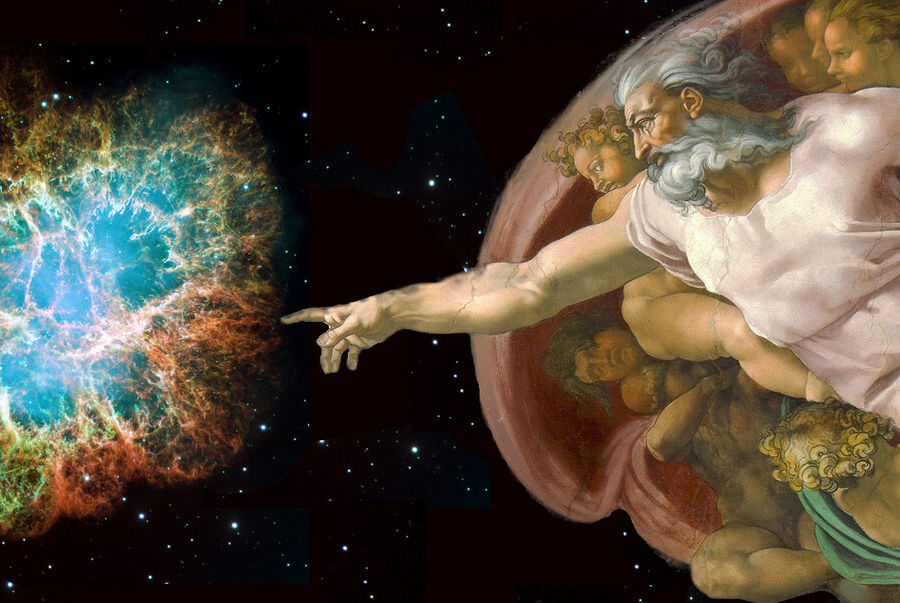HI readers! let’s see how science has developed in Buddhism
Buddhism encompasses many views and practices. The principal forms that exist today are Theravada and Mahayana referring to a movement that began approximately four centuries after the Buddha’s death and became the dominant form of Buddhism in East and Central Asia. It includes Chan (from Sanskrit dhyana which is a Chinese school of Mahayana Buddhism ) that is presently found in Tibet and some East Asian countries. Theravada Buddhism is prevalent in Sri Lanka and Southeast Asia and is refers to as monastic or Monasticism: a religious way of life in which one surrenders worldly pursuits to devote oneself fully to spiritual work, and textual lineages associated with the study of the Pāli Buddhist Canon (standard collection of scriptures in the Theravada Buddhist tradition as preserved in the Pāli language and is the most complete existing early Buddhist canon that derives mainly from the Tamrashatiya school of thought which is one of the early schools of Buddhism based in Sri Lanka).
The central dogma of Buddhism is the historical figure of the Buddha (Gautama Buddha or Siddhartha Gautama). The teaching of Buddha is focused on ethics and metaphysics, completely covered in the four Noble Truths on suffering and its origin in human desires. Following is the translated version of these truths:
The first truth is that life is suffering which includes pain, getting old, disease, and ultimately death and psychological suffering like loneliness, frustration, fear, embarrassment, disappointment and anger. This is an irrefutable fact that cannot be denied. It is realistic rather than pessimistic because pessimism is expecting things to be bad. Buddhism explains how suffering can be avoided and how we can be truly hap
The second truth is that suffering is caused by desire and hatred. We will suffer if we expect other people to conform to our expectation, if we want others to like us, if we do not get something we want, etc. In other words, getting what you want does not guarantee happiness rather than constantly struggling to get what you want and trying to modify your desires of getting something because desires deprives us of contentment and happiness. A lifetime of desire and passion especially passion to continue to exist, creates a powerful energy which causes the individual to re-born. So, desire leads to physical suffering because it causes us to be reborn.
The third truth is that suffering can be overcome, and happiness can be attained and that the true contentment is possible if we give up useless desires and learn to live each day at a time without residing in the past or imagining the future. This way, we can become happy and free, and can have more time and energy to help others. This is Nirvana.
The fourth truth is that the Noble 8-fold Path is the path which leads to the end of suffering.
The Noble Eightfold path comprises right view, right aspiration, right speech, right action, right livelihood, right effort, right mindfulness, and right concentration to end suffering and to break the cycle of rebirths (In Hinduism, all life goes through birth, life, death, and rebirth and this is known as the cycle of samsara . According to this belief, all living things have an atman, which is a piece of Brahman, or a spirit or soul. It is the atman that moves on into a new body after death (pl. read the blog on “science and Hinduism”) terminating in Nirvana: the spiritual enlightenment.
Modern Buddhists since the nineteenth century have presented Buddhism as harmonious with science. The reason is that since Buddhism unlike Christianity, doesn’t believe in metaphysically essential entities such as God, the soul, or the self hence, it can be easily compatible with the factual claims the scientists make. We could thus expect the dialogue and integration of views to stay in Buddhism.
Practical metaphysical teachings include belief in karma, the no-self, (In Buddhism, the term anatta or anatman refers to the doctrine of “no-self”
which means that no unchanging, permanent self or essence can be found in any phenomenon) and the cycle of rebirth.
For example, 14th Dalai Lama (the current Dalai Lama who is the highest spiritual leader and former head of state of Tibet) is known for his numerous efforts to lead dialogue between religious people and scientists. He has extensively written on the relationship between Buddhism and various scientific disciplines such as neuroscience and cosmology. Donald Lopez Jr (2008) identifies compatibility as an enduring claim in the debate on science and Buddhism, despite the fact that the concepts therein have clearly shifted over time.
According to David McMahan (2009), Buddhism underwent profound shifts in response to modernity in the west as well as globally. Doing this way,
Buddhists have often declared compatibility of Buddhism with science thereby distinctly differentiating their religion from Christianity.
However, the full picture of relationship between Buddhism as religion and science is not based on blanket acceptance of scientific claims rather, it is nuanced which means it is characterized by subtle and attractively complex qualities and distinctions which can be seen in East Asia especially in Japan and China in their reception of evolutionary theory in the early twentieth century.
The earliest evolutionary thoughts in Japan and China were not drawn from Darwin’s Origin of Species or Descent of Man, but from the work of authors like Ernst Haeckel and Thomas Huxley who challenged Darwin work. For example, the earliest writings on evolutionary theory in China compiled by Yan Fu and titled “On Natural Evolution” incorporated quotations from Herbert Spencer and Thomas Huxley. This work drew a distinction between social Darwinism and biological evolution. Chinese and Japanese Buddhists examine these ideas in the background of western colonialism and imperialism.
East Asian intellectuals saw how western colonial powers competed with each other for influence on their territory and differentiated parallels between this and the Darwinian struggle for existence. Consequently, Japanese intellectuals, political adviser and academician Kato Hiroyuki (1836–1916) described Darwinian thoughts and popularized notions such as “survival of the fittest” to justify the foreign policies of the Meiji government. It is in this background that the Buddhist responses to evolutionary theory can be established.
In Buddhism, there is no distinctions between soulful human beings and soulless animals rather, they consider all as part of rebirth cycle where living being in their previous lives have been either birds, insects or fishes. The no-self doctrine doesn’t specify human soul nevertheless, Chinese Buddhists in the 1920s and 1930s confronted with early evolutionary theory and did not comprehensively accepted Darwin’s theory. They viewed the central dogma of Darwinism “the struggle for existence” incompatible with Buddhism which emphasize on compassion with other creatures hence they also rejected social Darwinism which required engineering societies along Darwinian principles because it was incompatible with Buddhist ethics and metaphysics.
Struggling to survive and to propagate was like adhering onto sophisticated things (pl. read the article on “selfish genes”). Taixu: a Chinese Reformer and modern Buddhist chose Pyotr Kropotkin’s evolutionary views which are based on “evolutionary emphasis on cooperation instead of competition in the Darwinian principles” as more appropriate specifically on mutual aid, sacrifices, humanity and philanthropy. The Russian anarchist also argued that cooperation was central to evolutionary changes.
(This is also the currently prevailing view however; Kropotkin’s view is not adequate for what is required by Taixu because mutual aid still requires a self. t is only
when one recognizes the no-self doctrine could one dedicate oneself entirely to helping others, as bodhisattvas or person who are on the path towards bodhi or Buddhahood do).
Similar dynamics can be seen in the reception of evolutionary theory among Japanese Buddhists to whom, evolutionary theory was introduced during early Meji period (1868–1912) when Japan opened itself to foreign trade and ideas. Foreign experts specifically American Zoologist Edward S. Morse (1838–1925) shared his knowledge of sciences with Japanese scholars as they were interested in social consequences of Darwinism because they were already in possession of and influenced by translated versions of Spencer’s and Huxley’s work before they could read Darwinism.
Japanese Buddhists of the Nichiren traditions also known as Hokkeshū is a branch of Mahayana Buddhism based on the teachings of 13th-century Japanese Buddhist accepted many elements of evolutionary theory but, they categorically rejected the struggle for existence, and randomness and chance, as this contradicts the role of karma in one’s circumstances at birth.
The modern advocates of Nishiren Buddhist movement is of Honda Nisshō (1867–1931) who emphasized the importance of replacement which has been considered the main element of evolution by western authors like of Haeckel and Spencer who strongly argued against social Darwinism or the application of evolutionary principles in social engineering on religious grounds.
He argued that we can accept that humans are descended from apes without suggesting a distrustful aspect of human nature that view us as engaged in a struggle for survival with fellow human beings. Like Chinese Buddhists, Honda thought Kropotkin’s thesis of mutual aid as more compatible with Buddhism, but he was suspicious of Kropotkin’s anarchism. Honda’s work like other East Asian Buddhists indicates that historically, Buddhists are not passive recipients of western science but creative interpreters. In some cases, their religious reasons for rejecting some metaphysical assumptions in evolutionary theory led them to anticipate recent developments in biology, such as the recognition of cooperation as an evolutionary principle.
That’s all for now dear readers. Hope you will enjoy reading how Buddhists view, debated, and developed science. Please also keep in mind the first blog on this series “Science and the religion”. Please don’t forget to like and share the blog
See you next week with
Science and the Religion: how Islam has described it?
Bye.





